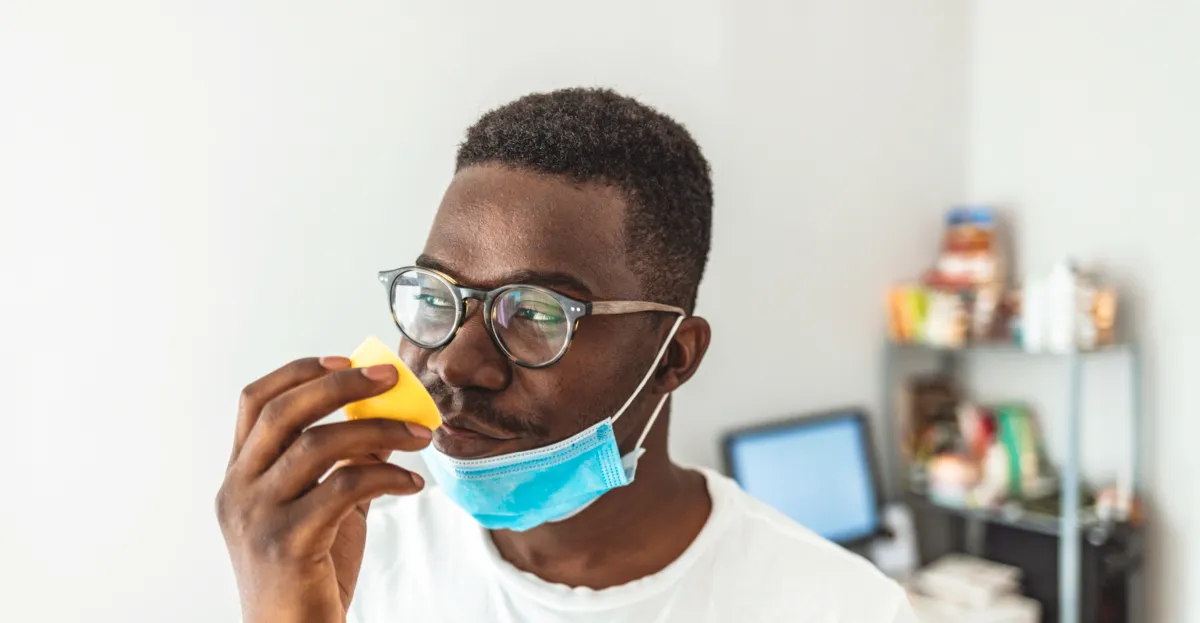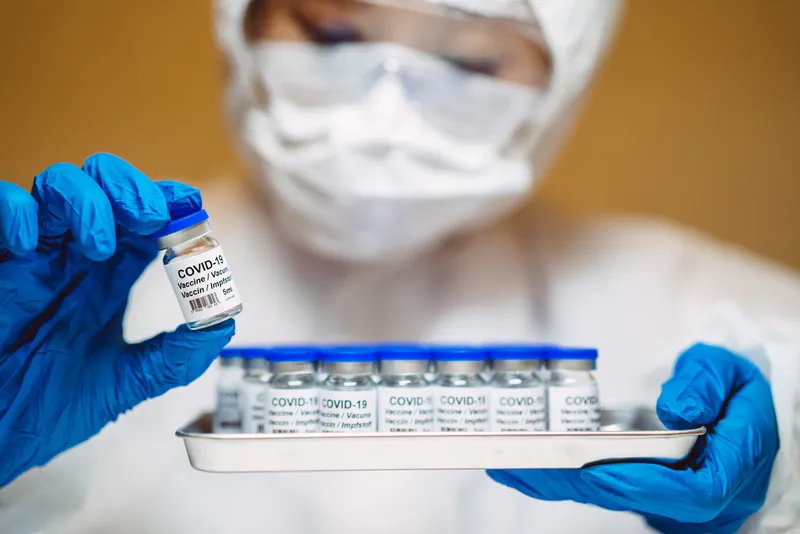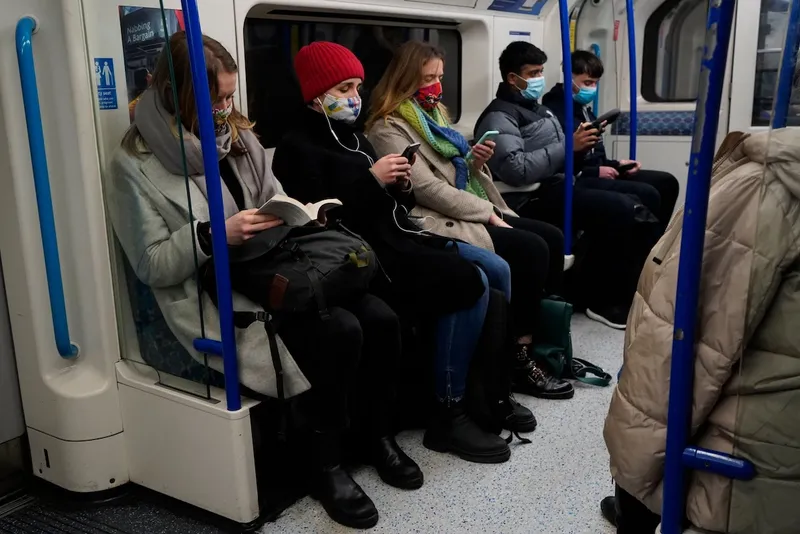On 11 March 2020, with more than 118,000 cases in 114 countries, and many of us already taking precautionary measures, the World Health Organization (WHO) officially declared that COVID-19 had reached pandemic status.
While a tumultuous couple of years followed for many of us, for science, the pandemic acted like a pressure cooker for innovation.
As the rest of the world was shutting down in 2020, an estimated 1.5 million research papers were added to the global literature – the largest 1-year increase in history and the largest annual total ever.
This scientific surge yielded many unexpected breakthroughs. Four years on, here are some of the most surprising lessons and discoveries.
1. We need to prepare for Disease X
The first big surprise of the pandemic came as soon as the starting gun was fired – it wasn’t the disease we were expecting. Now, experts want us to take that as a warning that we don’t know what’s around the corner.
“Over the last 100 years, I think we became a bit too narrowly focused on influenza viruses,” Dr Connor Bamford, a researcher in virology and antiviral immunity at Queen’s University Belfast, tells BBC Science Focus.
Pre-COVID, the consensus was that a variant of the virus responsible for the flu would cause the next major pandemic. So, when COVID began tearing around the world instead, scientists and governments alike were shocked.
“I think this reminded us that we shouldn't be that focused,” Bamford continues. “And we shouldn't go the other way and start thinking all about coronaviruses or coronaviruses and influenza viruses. We should think much broader about Disease X.”
Disease X is the name given by scientists to an unknown pathogen that could emerge in the future. When COVID hit, it was Disease X, but we don’t know what the next one might be.
2. Long covid is much more serious than we thought, and we’re only just getting to grips with it
For most people, a few days resting in bed and feeling ill was enough to recover from a COVID infection, but it quickly became apparent that this wasn’t the case for everyone.
For some, symptoms persisted as what’s now known as ‘long COVID’. Most commonly, the illness manifests as extreme tiredness, feeling short of breath, loss of smell and muscle aches, but there’s a whole host of other reported symptoms too.

So ubiquitous has long COVID become, that it's now estimated at least one in seven Americans have had it.
Now, thanks to a flurry of scientific research into the condition, we’re beginning to understand long COVID and its effects.
“What's going on in patients and how different it can be is incredibly interesting, disturbing, useful and without really definitive conclusions yet,” Jeremy Rossman, an honorary senior lecturer in virology at the University of Kent, tells BBC Science Focus.
Research so far has shown, for example, that long COVID causes changes in the body making it harder to exercise and that brain function can be impacted years later.
3. If you don’t get sick from COVID, you might have your genes to thank
Part of what made COVID so transmissive was its canny ability for seemingly healthy people to transmit it. Researchers became aware of this early on in the pandemic and it shaped government responses all over the world.
“That really showed that actually, this is something different than what we've seen before,” says Bamford.
According to research, at least 20 per cent of people infected with COVID don’t exhibit any symptoms. How come? It could be written in their DNA.
A paper published last summer in the journal Nature found that people who have a genetic variation of a protein called human leukocyte antigen, or HLA, were much less likely to develop symptoms – not even a tickle at the back of the throat.
These proteins are some of the most variable in the human genome, which might explain why some family members remain asymptomatic while others don’t.
Read more:
- Have face masks become less effective at managing COVID?
- COVID inquiry: Did lockdown and masks actually work? A professor explains
- What can the world do to avoid future pandemics like COVID-19?
4. There are way more variants than you think
Just like all life on our planet, viruses can evolve over time. In the case of the COVID virus, its variants often brought waves of new infections and more dreaded lockdowns.
“With the mutation of COVID, it was always going to happen,” Prof Paul Hunter from the Norwich Medical School of the University of East Anglia tells BBC Science Focus.
“I don't think many of us expected it to happen quite so quickly, though, with so many new variants sort of tumbling one after the other.”
Sure, you’ve heard of Alpha, Beta and Omicron. You might even remember the Omicron subvariant XBB.1.5, otherwise known as the ‘Kraken’. But it doesn’t end there.

In total, scientists have now identified over 1,500 variants of the virus.
Don’t worry, though. According to Hunter, the only variants we really need to be concerned about are so-called “escape mutations” that affect the surface of the virus and allow it to escape our immune systems.
“Some of the early mutations can give a virus big gains. But at every mutation, the virus takes one step further towards an ideal ‘best’ virus and so every subsequent step generally has a little bit less potential than the previous one,” he says.
Essentially, that means that it's becoming harder for the virus to mutate in a way that would render our vaccines or immune system response from prior infections useless. Phew.
5. Mysteriously, cases of type one diabetes in young people shot up
Perplexingly for doctors and patients alike, diagnosis of type 1 diabetes – a chronic illness where your blood sugar is too high because your body can’t make a glucose-regulating hormone called insulin – rose significantly among children and teens during the pandemic.
In a study published last year in the journal JAMA Network Open, researchers looked at tens of thousands of newly diagnosed child and teen type 1 diabetics from around the globe.
They found that in the first year of the pandemic, diagnoses of the disease among young people rose 14 per cent, while in the subsequent year, they were up 27 per cent on pre-pandemic levels.
Scientists still aren’t sure what caused the uptick, although possible explanations include backlogs due to the pandemic, less exposure to other immune system-boosting microbes due to lockdowns or possibly a reaction to COVID itself.
6. The mRNA vaccine has uses far beyond COVID
“The big thing was of course the mRNA vaccines,” Hunter says.
Unlike traditional vaccines that contain weakened or inactivated viruses, mRNA vaccines contain genetic instructions that teach the body to produce proteins that cause an immune response to a specific virus.
“The potential for mRNA vaccines was known, but whether we'd ever get one in my lifetime was open for debate. Nobody really knew,” he continues.
On 2 December 2020, just nine months after the declaration by the WHO, the UK became the first country to give the green light for an mRNA coronavirus vaccine.

So, what’s the big deal? Well, not only did the mRNA vaccine “wipe the floor with every other vaccine that was produced,” as Hunter puts it, but they’re now pegged to transform other areas of medicine.
Right now, scientists are exploring using similar mRNA vaccines for flu, shingles and rare genetic diseases. The same technology is also being applied to potential personalised anti-cancer vaccines, some of which are already at the clinical trial stage.
Moreover, Rossman says, mRNA vaccines can be made much more easily than traditional vaccines: “It opens the door to saying, can we make quick, fast, cheap vaccines for things that maybe don't have a huge market like neglected tropical diseases”.
7. Vegans and vegetarians might have the upper hand on COVID
Could being a vegetarian or vegan reduce your risk of contracting COVID? Yes, according to one observational study published in the journal BMJ Nutrition Prevention & Health last year.
The researchers compared the diets of more than 700 adult volunteers with their COVID outcomes between March and July 2022. They found that those who ate a predominantly plant-based or vegetarian diet had 39 per cent lower odds of infection.
The reason, according to the researchers, could be that plant-based diets are rich in antioxidants, phytosterols and polyphenols, which play an important role in keeping our immune systems in tip-top condition.
But while infection rates were lower for veggies, no association with the severity or duration of the illness was found.
8. Dogs can literally sniff out infected people
Given the choice of a lateral flow test, PCR or a friendly pooch, many of us might have gone with the pooch had that option been on the table. Sadly, it wasn’t for everyone, but it turns out dogs are quite effective at sniffing out the disease.
Last year, a team of researchers in California published findings that specially trained sniffer dogs were “pretty good” at detecting children with a COVID infection.
How good is pretty good? Well, in schools the dogs were 83 per cent accurate at identifying COVID-19-positive children, and 90 per cent accurate at identifying negative cases – deserving of a treat, right?
9. The debate over masks is still raging
We like to think science is black or white – something either works or it doesn’t – but four years on and there's still controversy on the mask front.
“Masks were really helpful early in the pandemic. And for people to argue that masks weren't is seriously wrong," Hunter says.
However, once people were vaccinated, whether masks did much was up for debate again, with Office of National Statistics data suggesting that from January to May 2022, the risk of getting a COVID-19 infection was nearly the same for those who did and didn’t wear a mask.
So, they worked and then after vaccination, their effectiveness was less prominent. That’s easy enough to follow, right? Wrong.

“You can draw a general conclusion from these data,” explains Hugh Pennington, emeritus professor at The University of Aberdeen’s School of Medicine, Medical Sciences and Nutrition. “But I think an informed conclusion would be unwise because of the complexity of the situation. The virus has changed quite substantially over that period – we’re not looking at the same one through the pandemic.”
Adding to that, some scientists say the sample size wasn’t big enough, while others think that there’s a question over how accurately the data reflects people’s real mask-wearing behaviour.
Among those who agree masks are effective at stopping transmission, there’s even less agreement about how effective they are. Part of the problem here is that there are so many different scenarios in which the effectiveness of masks can be studied.
“How do they work if people are vaccinated versus unvaccinated? If you're wearing a mask or somebody else is wearing a mask? And how do they work with different variants?” Rossman asks.
“None of those studies are saying masks don't work to reduce virus transmission, but they are saying, OK, the effectiveness of that is different in different situations,” he continues.
Hunter points to a paper published in the journal Applied Biological Sciences that estimates transmission is reduced by 19 per cent by wearing a mask. Maybe people should just go with that? They probably won’t, though.
About our experts
Connor Bamford is a lecturer and research fellow in virology and antiviral immunity at Queen’s University Belfast. His research has been published in the journals Clinical Microbiology and Infection, PLoS Pathogens and EMBO Molecular Medicine.
Jeremy Rossman is the honorary senior lecturer in virology at the University of Kent. His research focuses on the process of infectious disease outbreaks, and he has contributed to studies published in journals including PLoS Pathogens, Bioinformatics and Cell.
Paul Hunter is a professor of medicine at the University of East Anglia’s Norwich Medical School. His research covers the epidemiology of emerging infectious diseases, especially those linked to environmental factors. He has conducted epidemiological studies in the UK and around the world.
Thomas Hugh Pennington is an emeritus professor at The University of Aberdeen’s School of Medicine, Medical Sciences and Nutrition. He led the Pennington Group enquiry into the Scottish Escherichia coli outbreak of 1996 and was appointed a Commander of the Order of the British Empire for services to microbiology and food hygiene in 2013.
Read more: